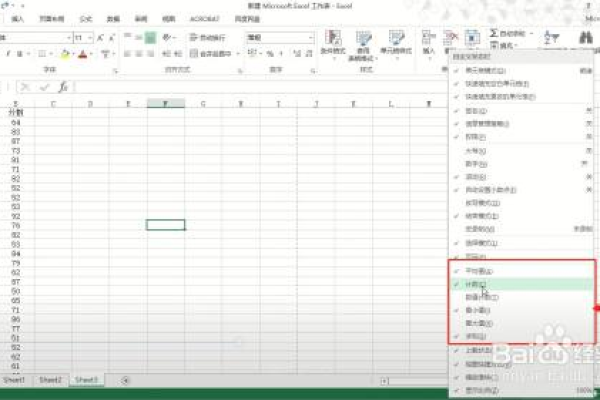d3js条形图
- 行业动态
- 2025-04-12
- 1
D3.js条形图通过数据驱动方式创建动态可视化,利用SVG元素绑定数据集,以矩形长度映射数值大小,支持自定义样式、交互动画及响应式布局,适用于直观展示数据分布、对比分析及实时更新场景,提升信息传达效率。
为什么选择D3.js?
D3.js(Data-Driven Documents)是一个基于JavaScript的开源数据可视化库,它通过绑定数据到DOM(文档对象模型),实现动态、交互式的图表展示,相较于其他图表库,D3.js的核心优势在于高度定制化和灵活性,用户可以完全控制图表的每一个细节,从颜色、动画到复杂的交互逻辑,均能自由实现,对于需要深度定制或复杂数据场景的开发者而言,D3.js是理想选择。
如何用D3.js绘制基础条形图?
以下是一个逐步实现的示例代码,完整展示从数据到可视化的过程。
环境准备
在HTML中引入D3.js库:
<script src="https://d3js.org/d3.v7.min.js"></script>
数据准备
定义一个包含名称和数值的数组:

const dataset = [
{ name: "项目A", value: 40 },
{ name: "项目B", value: 80 },
{项目C", value: 150 },
{ name: "项目D", value: 120 }
];创建SVG容器
设置画布尺寸,并添加到页面中:
const width = 600, height = 400;
const svg = d3.select("body")
.append("svg")
.attr("width", width)
.attr("height", height)
.style("background", "#f5f5f5");绘制条形
通过比例尺(Scale)映射数据到视觉元素:
const xScale = d3.scaleBand()
.domain(dataset.map(d => d.name))
.range([50, width - 30])
.padding(0.2);
const yScale = d3.scaleLinear()
.domain([0, d3.max(dataset, d => d.value)])
.range([height - 50, 20]);
svg.selectAll("rect")
.data(dataset)
.enter()
.append("rect")
.attr("x", d => xScale(d.name))
.attr("y", d => yScale(d.value))
.attr("width", xScale.bandwidth())
.attr("height", d => height - 50 - yScale(d.value))
.attr("fill", "#4CAF50")
.attr("rx", 3); // 圆角效果添加坐标轴与标签
增强图表的可读性:

const xAxis = d3.axisBottom(xScale);
const yAxis = d3.axisLeft(yScale);
svg.append("g")
.attr("transform", `translate(0, ${height - 50})`)
.call(xAxis)
.selectAll("text")
.style("font-family", "Arial");
svg.append("g")
.attr("transform", "translate(50, 0)")
.call(yAxis)
.selectAll("text")
.style("font-size", "12px");添加交互效果
通过鼠标事件提升用户体验:
svg.selectAll("rect")
.on("mouseover", function() {
d3.select(this)
.transition()
.duration(200)
.attr("opacity", 0.7);
})
.on("mouseout", function() {
d3.select(this)
.transition()
.duration(200)
.attr("opacity", 1);
});优化技巧
- 响应式设计:监听窗口大小变化,动态调整图表尺寸:
window.addEventListener("resize", () => { const newWidth = document.body.clientWidth * 0.8; svg.attr("width", newWidth); // 更新比例尺和元素位置 }); - 颜色映射:使用
d3.scaleOrdinal()为不同类别分配颜色。 - 动画过渡:在数据更新时,通过
transition()实现平滑变化。
通过D3.js创建的条形图不仅能清晰呈现数据,还能通过交互和动画增强用户参与感,本文从基础实现到进阶优化,覆盖了实际开发中的核心要点,建议结合官方文档和社区资源深入探索,以适应更复杂的需求。

引用说明
- D3.js官方文档:https://d3js.org/
- 数据可视化设计原则参考:《The Functional Art》by Alberto Cairo
- 交互设计理论:W3C Web Accessibility Initiative (WAI) 指南















